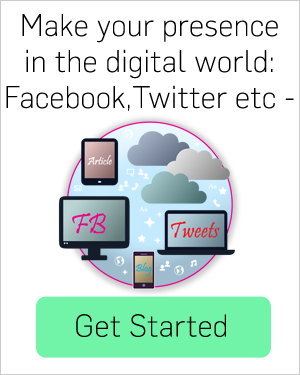

Content Marketing
Content marketing is any marketing that involves the creation and sharing of media and publishing content in order to acquire customers. This information can be presented in a variety of formats, including news, video, white papers, e’books, infographics, case studies, how’to guides, question and answer articles, photos, etc.
Content Marketing has been defined in multiple ways. The meaning of the term depends a lot on the purpose and context. One of the most used definitions is “the technique of creating and distributing relevant and valuable content to attract, acquire and engage a clearly defined target audience in order to drive profitable customer action„
Content marketing creates interest in a product through educational or informative material. Successful content marketing relies on providing “consistent, high’quality content that solves people's problems”.
1. Know your audience
“People are talking about content marketing as the next big thing, which is what the same people were saying about social media five years ago,“ says David B. Thomas, Senior Director of Content and Engagement at salesforce.com. ”For me, they are part and parcel of the same philosophy: listen to your customers, understand what is important to them, engage with them in a human voice and share useful and interesting content that helps them solve their business problems.“
The most successful content’marketing brands know exactly whom they want to reach, and they craft strategies to connect with each audience segment in a meaningful way.
2. Listen up
As Dave points out, it’s not enough just to know your audience; you also have to listen to what they’re saying (and when you do, you’ll get to know them even better). Use a social media listening and engagement platform to set up alerts for the company or industry you want to target, follow prospective customers and industry leaders on social media, and keep up’to’date on industry news.
3. Engage authentically
Content marketing, just like any good media strategy, is a two-way street. In addition to listening to your audience, you should be engaging with them in meaningful ways. According to Forbes (which ranked #1 on the Influential Brands list), that can mean leveraging platforms like Twitter to enhance your customer service:
”Whether you’re managing an international brand like Nike, or a local deli, it’s important to say thank-you to every follower who asks a question, has a problem, or gives you a compliment. Some will respond back, and others will retweet your response simply because they want to show their friends that you’ve engaged with them.“
4. Meet your readers where they are
If you take nothing else away from this article, take this: You cannot be all things to all people. Don’t expect to be their top destination for social interactions and thought leadership and corporate news; be aware that your readers may be going to different places for each different piece of their content buffet. And that’s OK, as long as you have clarity about the value you can offer and your method for attracting audience.
5. Know yourself
In-house content teams have a wealth of resources at their disposal, and at companies like HP, IBM, and salesforce.com, many of the top minds in a particular industry are easily accessible. Be conscious of your niche advantage, and use it as a platform for thought leadership.
6. Be “newsy“
Anyone who’s taken a journalism class knows about the “inverted pyramid“—a story structure that puts the meatiest, most important information up front, then provides backstory. In a busy world, most readers want to know up-front what they’re getting’and they want it to be new and different from what they’ve already read or seen that day. Don’t make them work too hard to get valuable information out of your content.
7. Measure, measure, measure
Without the data to prove it, you’ll never know if your content strategy is working. Most companies should know where their traffic originates and which of their readers eventually become customers. If you don’t have this data, get it!
8. Iterate constantly
Content marketing is still a relatively new field, which means there isn’t a set playbook for what works and what doesn’t. Give your content team the freedom to try new approaches, and make every moment a teachable one.
9. Invest in content
In order to excel at content marketing, your company needs to allocate resources toward creating and distributing high–quality content. Whether this means hiring brand journalists or thinking carefully about how content complements parallel operations, it’s worth putting time and money into crafting your content strategy.
10. Amaze and delight
Once you’ve invested in a content team and strategy, there’s no reason your brand can’t offer content that sings . Microsoft’s magazine–style profiles make company employees look like rock stars, and its Twitter feed tends more toward inspiring photos than product information.
“If you don’t have anything interesting to say, it doesn’t matter how many channels you share it in,“ Thomas says. “We’re not just guessing about this stuff. We do a lot of analysis that shows us what kind of content our customers want. They want content that teaches them something, something that will help them be better at what they do.“


